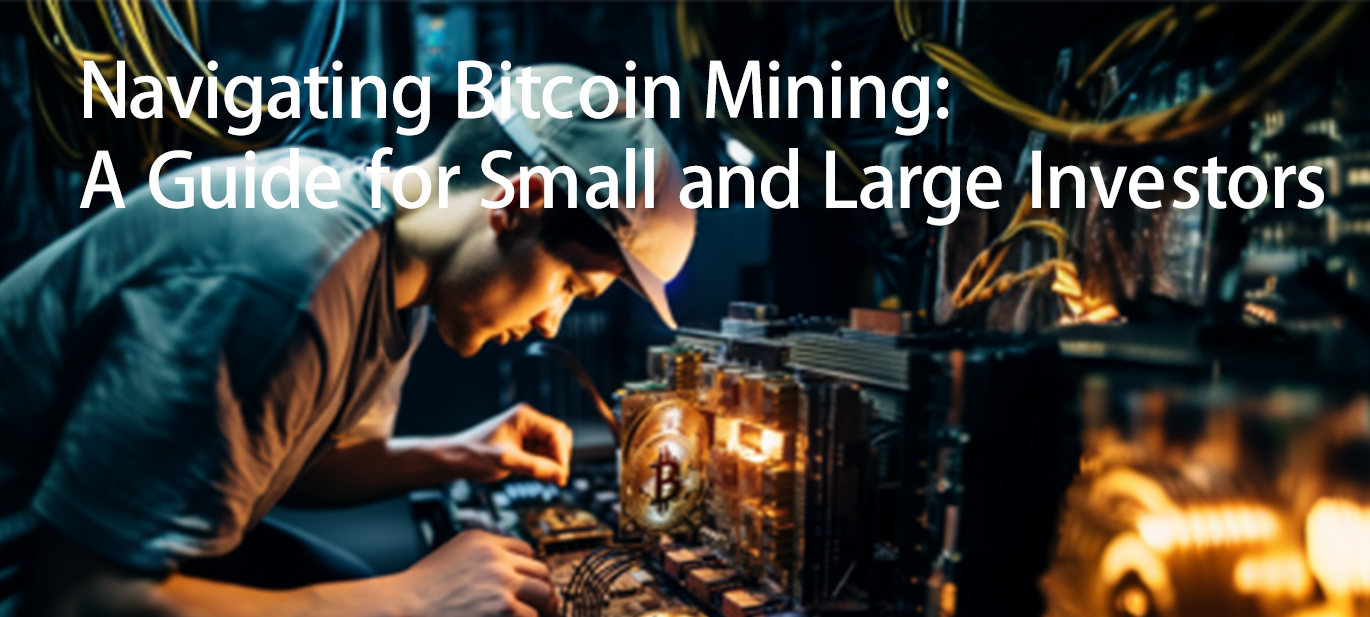
09/05/2023 - Alan Gallo
In the fast-evolving landscape of cryptocurrency, Bitcoin mining remains a powerful way to potentially earn rewards while supporting the network. Whether you're a small-scale investor dipping your toes into the world of crypto or a larger investor looking to make a substantial impact, understanding the steps involved is crucial. In this blog post, we'll walk you through the key considerations and steps to start Bitcoin mining, tailored to both small and large investors.
Just starting out:
Step 1: Education and Research
Before diving into Bitcoin mining, take time to educate yourself about the basics of blockchain technology, proof of work, and the mining process. Understand the hardware requirements, power consumption, and potential rewards. Online forums, tutorials, and community discussions can be valuable resources.
Step 2: Selecting Hardware
For small investors, cost-effective hardware options like ASIC (Application-Specific Integrated Circuit) miners are recommended. Look for products that strike a balance between performance and energy efficiency to maximize your mining potential without breaking the bank.
Step 3: Choosing a Mining Pool
Joining a mining pool is a common approach for small investors. Pools combine computational power from multiple miners, increasing the chances of earning regular, albeit smaller, rewards. Research different pools, considering factors such as fees, payout methods, and pool reputation.
Step 4: Setting Up and Configuration
Follow the manufacturer's guidelines to set up your hardware. Configuration involves connecting the hardware to a mining pool using your unique credentials. Optimize settings for maximum efficiency while considering factors like temperature control and power usage.
Step 5: Monitoring and Maintenance
Regularly monitor your mining operations to ensure stable performance. Small investors should be prepared to troubleshoot basic issues and perform routine maintenance tasks. Keep track of your mining pool's performance and your individual contribution.
Large Investors: Those with large capital and have an understanding of scaling a business. Usually having .5 MW mine can be considered a large investor. On average a 1 MW farm holds 300 air cooled miners.
Step 1: In-Depth Market Analysis
Large investors should conduct comprehensive market research to understand the current Bitcoin ecosystem. Analyze factors such as network difficulty, mining profitability, and potential regulatory changes that might impact mining operations on a larger scale.
Step 2: High-Performance Hardware
For larger investors, investing in high-performance ASIC miners or even setting up mining farms might be feasible. Focus on efficiency and hashing power to optimize your mining output. Consider collaborating with hardware Sellers like JSBIT to help configure solutions for you.
Step 3: Direct Mining or Mining Farm
Depending on your investment size, you might opt for direct mining or setting up a mining farm. Direct mining involves running hardware at your location, while a mining farm involves a larger-scale setup with multiple miners in a controlled environment.
Step 4: Network Security and Stability
Larger investors need to prioritize network security to protect their substantial investment. Implement robust security measures to safeguard your mining operations against potential threats and attacks.
Step 5: Strategic Diversification
Diversifying your mining strategy can mitigate risks associated with changes in market conditions. Consider splitting your hashing power between different coins or even participating in different consensus mechanisms.
Step 6: Continuous Optimization
Constantly monitor and fine-tune your mining operations for optimal performance. Large investors should have a dedicated team of expert partners to manage hardware, software, and operational aspects effectively.
In conclusion, whether you're a small or large investor, Bitcoin mining offers opportunities to participate in the crypto ecosystem. Small investors can start modestly with cost-effective hardware and mining pools, while larger investors can leverage their resources for more substantial operations. Whichever path you choose, staying informed, adapting to changes, and optimizing your strategy are key to success in the dynamic world of Bitcoin mining.
Post time: Sep-05-2023












